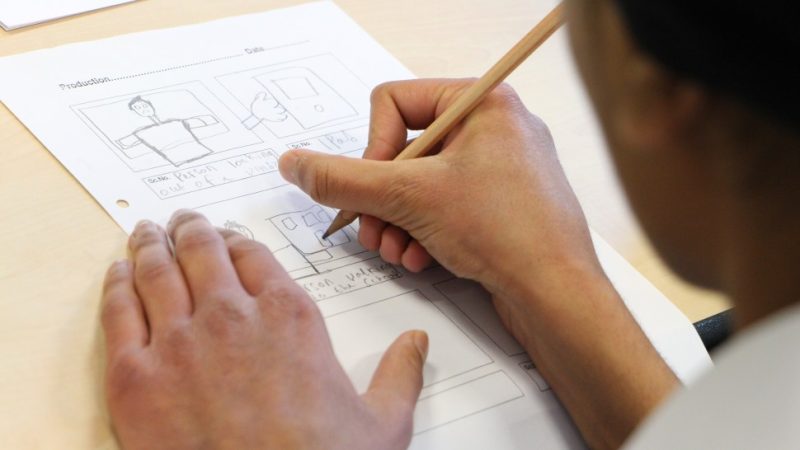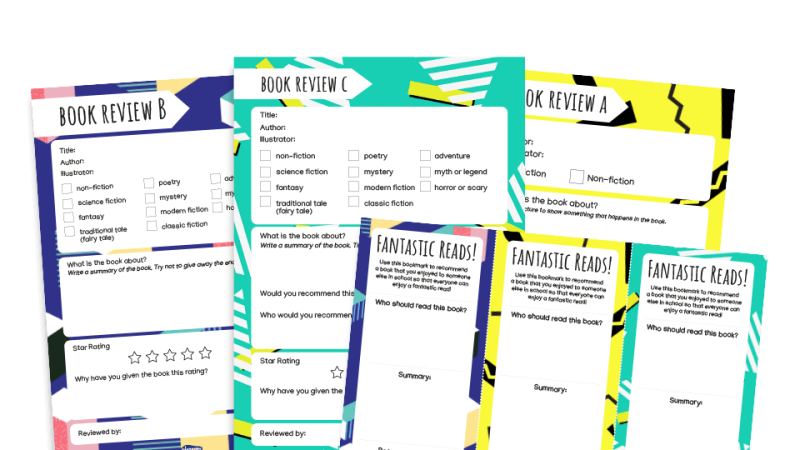Dr Seuss books – Best resources and worksheets for KS1 and KS2
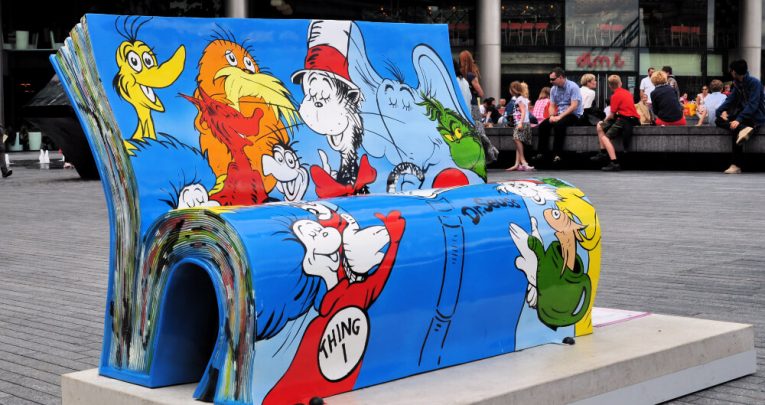
Celebrate the master of rhyme and wordplay with these activities, ideas, lesson plans and more…

- by Teachwire
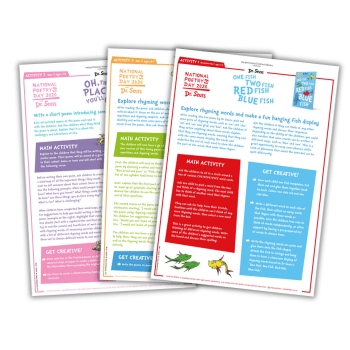
Step into the whimsical world of Dr Seuss books as we explore the enchanting possibilities of incorporating them into your classroom. The rhyming text and colourful characters are a great way to inspire learning and creativity.
Dr Seuss books
Dr Seuss books have featured in classrooms for decades. Favourite titles include:
- Yertle the Turtle and Other Stories (1950)
- Horton Hears a Who! (1954)
- The Cat in the Hat (1957)
- How The Grinch Stole Christmas (1957)
- One Fish Two Fish Red Fish Blue Fish (1960)
- Green Eggs and Ham (1960)
- Dr Seuss’s ABC (1963)
- Fox in Socks (1965)
- The Lorax (1971)
- Oh, the Places You’ll Go! (1990)
Who is Dr Seuss?
Dr Seuss is the pen name of Theodor Seuss Geisel, who was born in Springfield, Massachusetts, in 1904. He worked as an illustrator and cartoonist, before publishing his first children’s book in 1937. He died in 1991 aged 87.
Famous fans
Many modern authors, illustrators and poets have been inspired by Dr Seuss, including:
- Rob Biddulph: “How the Grinch Stole Christmas, by Dr Seuss, is such an incredible experience to read aloud; it’s a performance, and that’s hugely enjoyable for the reader and the listener alike. The rhythm and the rhyme are so well done, and such fun.”
- Phil Earle: “Horton Hatches The Egg may be only 64 pages long, but it is the most joyful story to read aloud ever, and it is helped along the way by pictures: funny, sad, moving pictures that deepen our feelings for our hero.”
- Tom Fletcher: “Dr Seuss was a particular favourite – so engaging, fascinating and fun; I don’t know of any other series of books that uses words in such a skilful, playful way.”
- Jeff Kinney: “I loved Dr Seuss with his rhyming patter and crazy, creative stories.”
- Judith Kerr: “Dr Seuss was a revelation – I was so impressed by the clever, playful way he used words that I tried a similar style for my Mog books.”
- Kate Wakeling: “Dr Seuss’ books for younger children remain firm favorites because they place sense in the service of sound, usually through rascally rhymes.”
Works withdrawn
In 2021, six Seuss books were withdrawn because of imagery deemed racist and insensitive.
Celebrate Dr Seuss Day
Dr Seuss Day is held every year on 2nd March, which is Dr Seuss’ birthday.
Dr Seuss resources
Y1-4 activity sheets
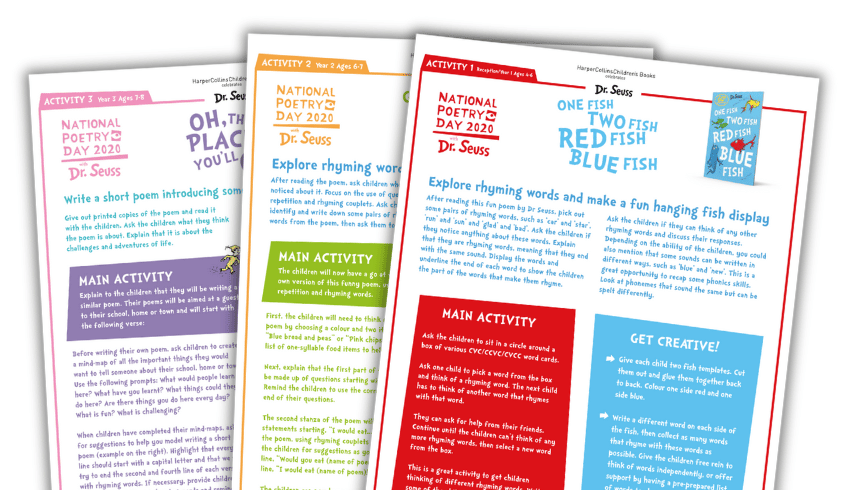
This free resource pack for pupils in KS1 and LKS2, includes activity sheets based on three Dr Seuss poems.
Year 1 children can make a fun rhyming words hanging display inspired by One Fish Two Fish Red Fish Blue Fish. Pupils in Year 2 will have a go at writing their own versions of Green Eggs and Ham. Year 3/4 learners are invited to think about what Oh The Places You’ll Go! means to them.
Green Eggs and Ham KS1 lesson pack
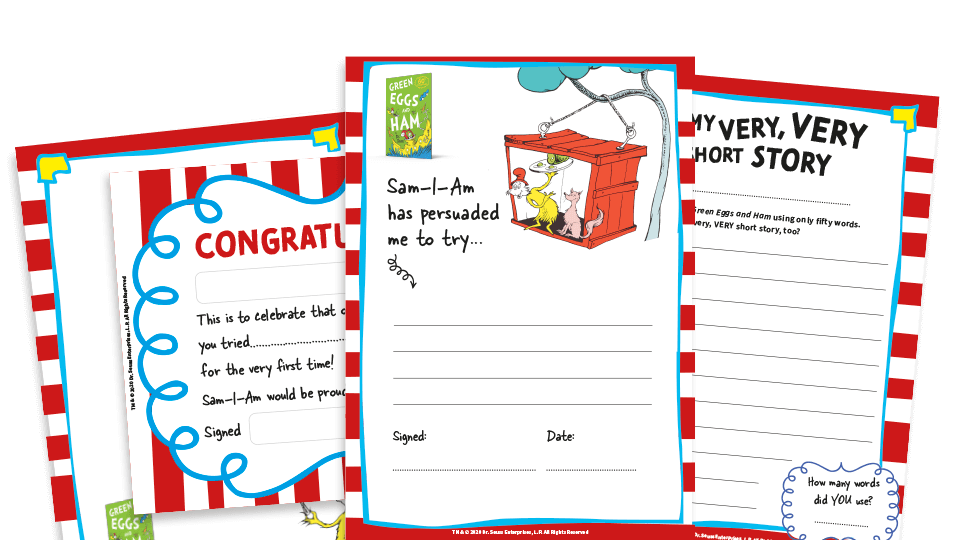
Let your Key Stage 1 children play with words and the power of persuasion with this free Dr Seuss-inspired teaching plan from HarperCollins. There are starter questions, three full activities and an extension activity.
Year 6 Oh, the Places You’ll Go! literacy activity pack
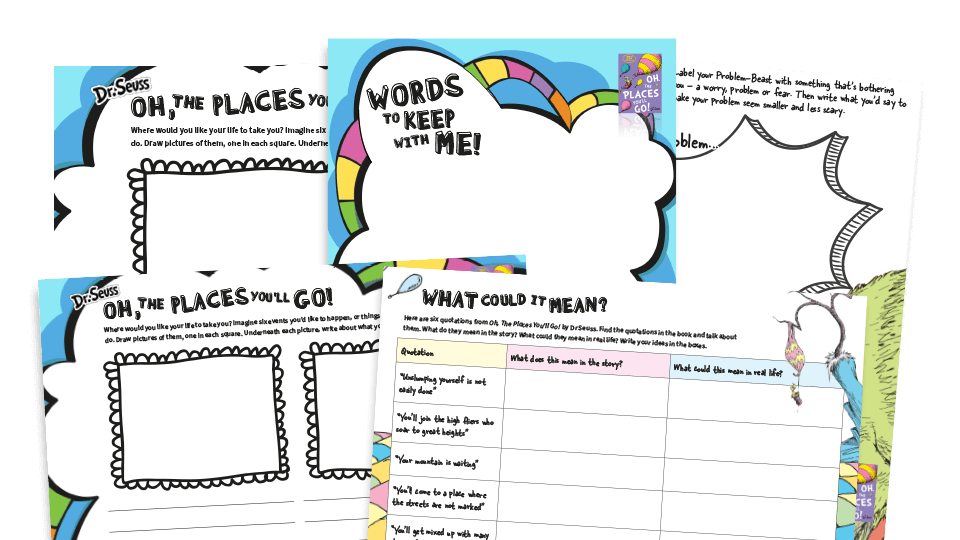
Use Dr Seuss’ classic picturebook to cover literacy and PSHE in UKS2, with these free activities that would make the perfect project for Y6 leavers. Pupils will have the chance to:
- Articulate their hopes and ambitions, and identify some of the attitudes, behaviours and skills they might need to achieve them
- Enjoy a shared reading-for-pleasure experience and build on it
- Interrogate text and pictures to extend their understanding and discover different meanings
- Explore aspects of challenge, opportunity and change through drama, creative writing and art
- Develop their understanding of story structure
- Gain insight into their own emotions and those of others
- Explore quotations and choose one they find meaningful
Dr Seuss KS1 science lesson plan
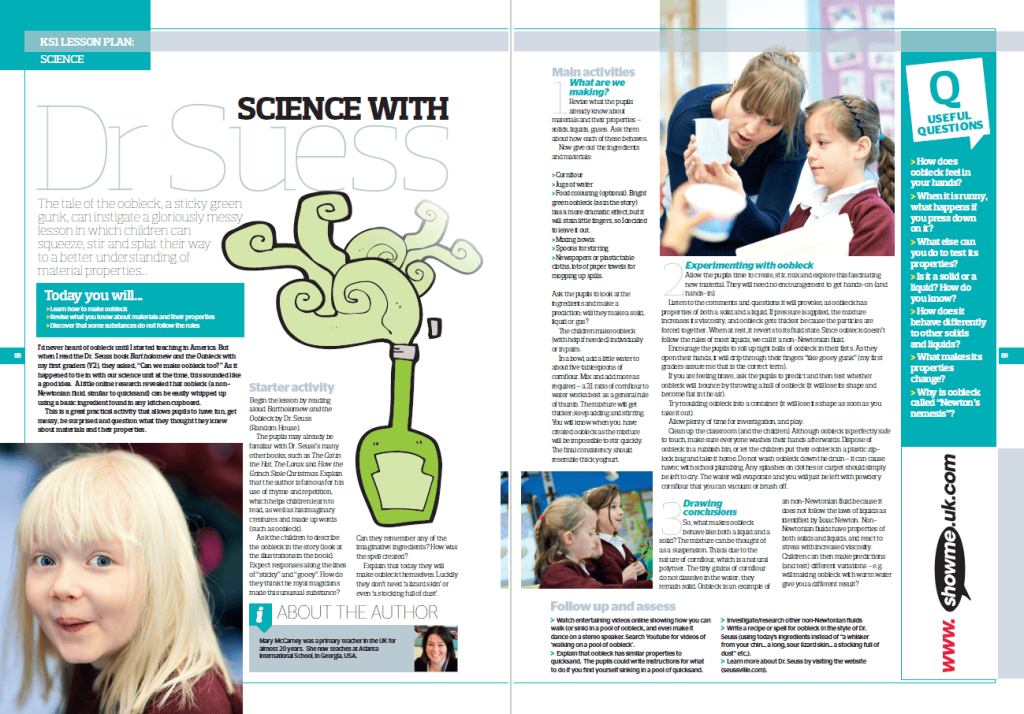
Investigate materials and their properties with Dr Seuss’s ‘Oobleck’ with this free KS1 lesson plan.
The tale of the Bartholomew and the Oobleck, about a sticky green gunk, can instigate a gloriously messy lesson in which children can squeeze, stir and splat their way to a better understanding of material properties.
Printable Dr Seuss worksheets
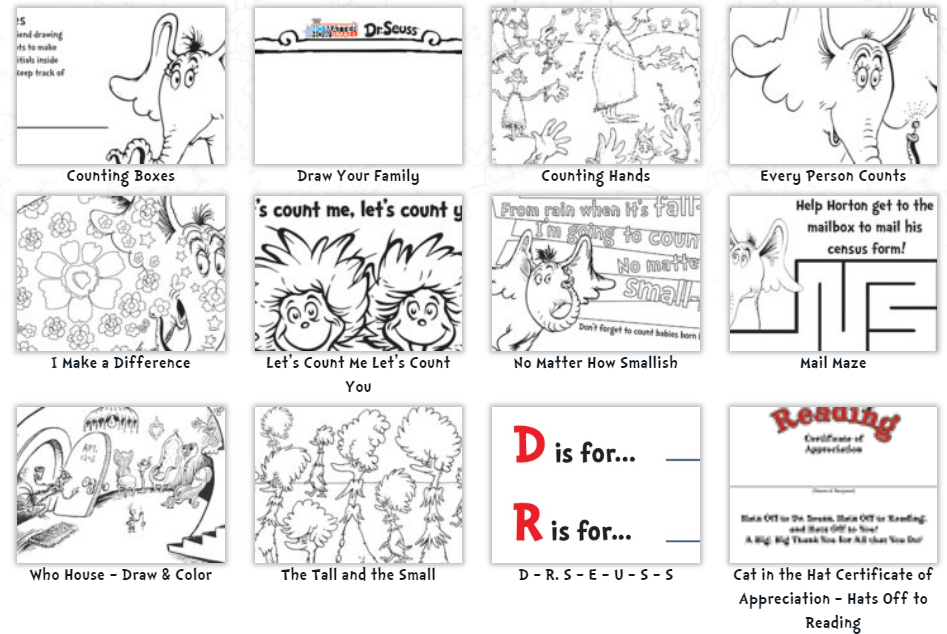
Over at Seussville you’ll find a whole host of printable PDF worksheets for everything from colouring in to counting boxes, opposites, rhyming, drawing and counting.
KS1 Dr Seuss activities
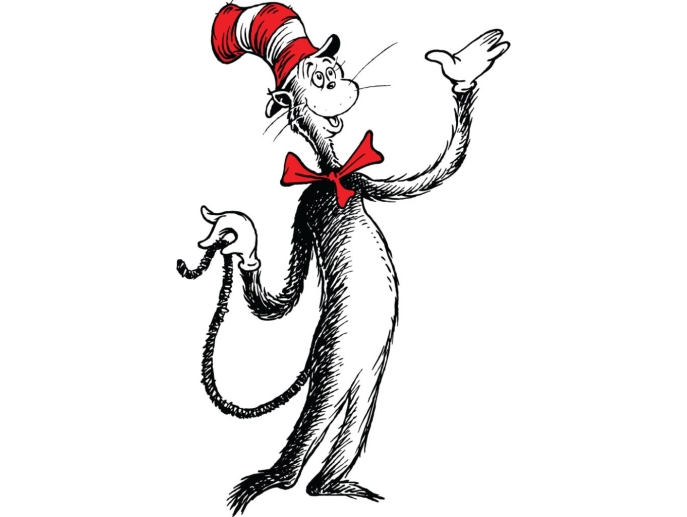
Let children loose in the world of the ‘American Poet Laureate of Nonsense’, and see where their imagination takes them with these ideas from Carey Fluker Hunt…
“If you never did you should. These things are fun, and fun is good.”
This line from One Fish Two Fish sums up Dr Seuss’ work – if you haven’t dipped into his world of zany humour and repetitive rhymes, you really, really should.
Titles such as The Cat in the Hat and Green Eggs and Ham are known and loved even in households that don’t really ‘do’ reading, and many of his characters have become cultural icons in their own right. To date, more than 650 million books have been sold in more than 20 languages.
Affectionately known as ‘The American Poet Laureate of Nonsense’, Dr Seuss, born Theodor Geisel, might not have been a real doctor, but he was a thoroughly authentic and original author who understood his young audience and produced book after book that they adored.
His ability to manipulate a limited vocabulary and turn it into riotously joyful text led to success in the ‘beginner reader’ market, but Seuss wasn’t just interested in teaching children to read, he wanted to teach them to think.
Books such as How the Grinch Stole Christmas, Horton Hears a Who! and The Lorax deal with issues such as consumerism, environmental disaster and the arms race in ways that children find enticing, accessible and fun. Seuss never spoke down to his audience, but neither did he lose sight of the need to entertain.
Written in a catchy, foot-tapping poetic meter and full of quirkily energetic illustrations, these are books that children find impossible to ignore, and make a great starting point for creative literacy and cross-curricular activities.
Discovering the books
Place a surprise package in your book corner containing Dr Seuss books and label with a message from the Cat in the Hat inviting everyone to dig in.
Allow children to explore independently and watch what happens. Which books are they drawn to, and what do they tell each other about their choices?
Once you’ve had time to get to know the books, talk to your class about their response. Which titles do they prefer, and why? Were they familiar with any of these books before today? Who they would recommend these books to, and why?
Explain that you’re going to find out about the man who wrote these books. As a class, come up with questions about Dr Seuss and his works. Display these in your reading corner, along with some of the comments your class made earlier, and refer back to them as you find out more.
Wordplay
Rhymes
Rhyme is a major feature of Dr Seuss’s work. Play rhyming games by taking turns to think of a word that rhymes with an object in the room, or giving clues such as, “What’s a word that rhymes with red? It’s where you go to sleep at night”. Read other rhyming stories and poems, and compare.
Repetition
A limited and repeated vocabulary makes Dr Seuss’s books accessible to beginner readers. Learn some of the text in Green Eggs and Ham and The Cat in the Hat by heart and perform it.
Invented words
Dr Seuss loved playing with words and inventing new ones. Try making some new sounds and work out how to write them down. Read The Lorax and find the invented words (eg gruvvulous, snergelly and rippulous). What do they mean? How can you tell? Invent some words to describe everyday objects. Which would you use in a poem, and why?
Tongue twisters
“I can’t blab such blibber blubber!”. Dr Seuss was a great fan of tongue twisters. Warm up with Peter Piper before you tackle the rhymes in Fox in Socks. They’re thoroughly fiendish!
Playing with beat and rhythm
The beat (or pulse) in Dr Seuss’s work is the ‘ticking of the clock’ behind the poetry. If you tap your foot as you speak, you’re marking the beat (the rhythm follows the words).
Share Steve Webb’s picture book Tanka Tanka Skunk, then beat time to some familiar rhymes (see here for more ideas) before tackling Green Eggs and Ham. Give everyone the chance to beat the pulse while others read aloud. You could try moving in time to the beat while you read, too!
Making mischief
“He should not be here when your mother is out…”. ‘Misrule’ is a feature of Dr Seuss’ books, and it appeals to children enormously.
It also places Seuss in a storytelling tradition that stretches back to our earliest folk tales. Read The Cat in the Hat and talk about the Cat’s (and the children’s) mischief. Role-play the events, then make up some more tricks, games and near-disasters before writing and illustrating your own stories.
Fiction can explore things we wouldn’t want to happen in real life. Read some traditional stories such as The Wolf and the Seven Little Kids. Talk about safeguarding and why we shouldn’t open the door to strangers.
Cross-curricular opportunities
Fun-in-a-box
When Dr Seuss had writer’s block he would go to a hat-filled cupboard and try them on. Sometimes creativity comes in sideways, and playing can be the key to unlocking good ideas.
- Make a collection of hats and put each one inside a cardboard box. Label the boxes ‘HAT belonging to the CAT’.
- Read The Cat in the Hat and talk about the games the Cat dreams up. He doesn’t write stories or paint pictures, but he’s still being creative. Give each child a box and explore what’s inside. Where could the Cat have found this hat – and what could it help him invent?
- Talk about ideas and where they come from. Like Dr Seuss and the Cat, put your hats on and dream up some new ideas (questions you’d like answered, ideas for stories or pictures, inventions that solve a problem, new ways of doing things).
- How could you record your ideas so that you don’t forget them? In writing, in pictures, as audio recordings, with labelled diagrams or a mixture of everything? Is it difficult to think of ideas while you’re sitting still? Where and how might you have better ideas?
“I am the Lorax. I speak for the trees”
- Read The Lorax. What does the Once-ler mean when he says he “went right on biggering…”? And what are the outcomes of his greed?
- Have a go at swaying like a Truffula Tree, humming like a Fish and singing like a Swomee- Swan, then show what happens when they meet the Once-ler – “He was shortish, and oldish. And brownish. And mossy. And he spoke with a voice that was sharpish and bossy…”
- Where might the Lorax have come from, and what did he do before the Once-ler arrived? Role play the conversations between the Lorax and the Once-ler, then write a report for a newspaper as if you’ve just spoken to the Lorax about what happened in the book – or tell a story about what happens when he leaves.
- The Once-ler lives in a Lerkim. Design your own Lerkim and label its special features. Perhaps you could build a Lerkim den in the school grounds – or make one in your reading corner using a clothes airer and old curtains! A den needs gadgets. What can you invent? Make a whisper-ma-phone using cans and string, and send messages. Can you improve it in any way? Write instructions for the Once-ler, telling him how to make and use a whisper-ma-phone.
- “Unless someone like you cares a whole awful lot, nothing is going to get better. It’s not.” Find out about ways to help the environment. Perhaps you could plant some Truffula trees of your own?
Scrambled eggs super-deedooper-dee-booper
- Read Scrambled Eggs Super and explore the impact of adding extra ingredients to your egg mix. Peter T Hooper went for things like ginger and prunes – but you might prefer grated cheese.
- Why not turn your eggs and ham green, or even blue, with a little colouring? Design an investigation to discover what people think about food that isn’t the right colour, then display your results as graphs and charts.
- Try also setting up a Green Eggs and Ham role-play café. Make ‘food’ from plasticine or painted salt dough and create menus, price lists and order pads, then play at serving and eating there. The waiters can take orders and prepare bills, the cooks can write and draw their own cookery books and the customers can write magazine reviews.
- You can find more recipe ideas, such as ‘Beautiful Schlopp and Pink Ink Yink Drink’ at Seussville.
Carey Fluker Hunt is a freelance writer, children’s book ambassador and creative consultant.








